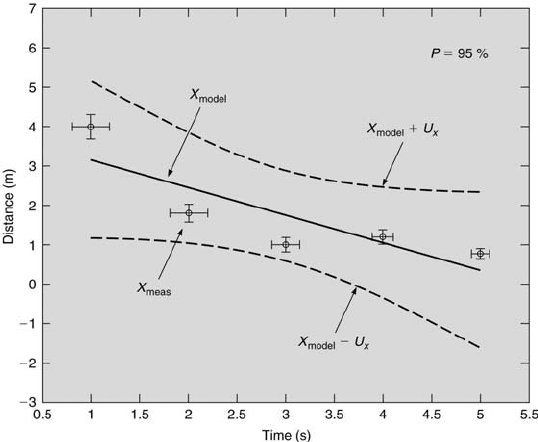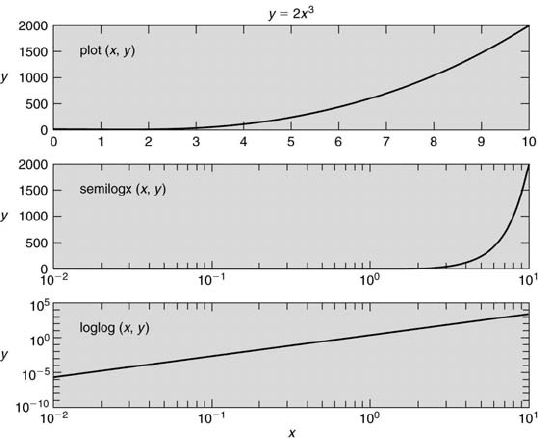Patrick F. Dunn, Measurement, Data Analysis, and Sensor Fundamentals for Engineering and Science, 2nd Edition
Подождите немного. Документ загружается.

This page intentionally left blank

Bibliography
[1] http://physics.nist.gov/cuu/Units/current.html.
[2] Beckwith, T.G., Marangoni, R.D. and J.H. Leinhard V. 1993. Mechanical
Measurements. 5th ed. New York: Addison-Wesley.
[3] Van Wylen, G.J. and R.E. Sonntag. 1965. Fundamentals of Classical
Thermodynamics. New York: John Wiley and Sons.
[4] F.M. White. 1999. Fluid Mechanics. 4th ed. New York: McGraw-Hill.
[5] Halliday, D. and R. Resnick. 1966. Physics. Combined Edition. Parts I
and II. New York: John Wiley and Sons.
[6] S. Strauss. 1995. The Sizesaurus. New York: Kodansha International.
[7] C.F. Bohren. 1991. What Light Through Yonder Window Breaks? New
York: John Wiley and Sons.
[8] 1976. About Sound. U.S. Environmental Protection Agency, Office of
Noise Abatement and Control, Washington, DC.
[9] L. Pauling. 1970. General Chemistry. 3rd ed. San Francisco: W.H. Free-
man.
[10] T. Crump. 2001. A Brief History of Science. London: Robinson.
[11] http://www.megaconverter.com/Mega2/. This site also refers to many
other conversion sites.
[12] 1976. Standard for Metric Practice: ANSI/ASTM E 380-76. American
Society for Testing and Materials.
[13] http://www.digitaldutch.com.
[14] J. Gullberg. 1997. Mathematics from the Birth of Numbers. New York:
W.W. Norton and Company.
437
This page intentionally left blank

12
*Technical Communication
CONTENTS
12.1 Chapter Overview . . . . . . . . . . . . . . . . . . . . . . . . . . . . . . . . . . . . . . . . . . . . . . . . . . . . . . . . . 439
12.2 Guidelines for Writing . . . . . . . . . . . . . . . . . . . . . . . . . . . . . . . . . . . . . . . . . . . . . . . . . . . . 440
12.2.1 Writing in General . . . . . . . . . . . . . . . . . . . . . . . . . . . . . . . . . . . . . . . . . . . . . . . . 440
12.2.2 Writing Technical Memoranda . . . . . . . . . . . . . . . . . . . . . . . . . . . . . . . . . . . . 441
12.2.3 Number and Unit Formats . . . . . . . . . . . . . . . . . . . . . . . . . . . . . . . . . . . . . . . . 443
12.2.4 Graphical Presentation . . . . . . . . . . . . . . . . . . . . . . . . . . . . . . . . . . . . . . . . . . . . 444
12.3 Technical Memo . . . . . . . . . . . . . . . . . . . . . . . . . . . . . . . . . . . . . . . . . . . . . . . . . . . . . . . . . . . 447
12.4 Technical Report . . . . . . . . . . . . . . . . . . . . . . . . . . . . . . . . . . . . . . . . . . . . . . . . . . . . . . . . . . 449
12.5 Oral Technical Presentation . . . . . . . . . . . . . . . . . . . . . . . . . . . . . . . . . . . . . . . . . . . . . . 451
12.6 Problem Topic Summary . . . . . . . . . . . . . . . . . . . . . . . . . . . . . . . . . . . . . . . . . . . . . . . . . 454
12.7 Review Problems . . . . . . . . . . . . . . . . . . . . . . . . . . . . . . . . . . . . . . . . . . . . . . . . . . . . . . . . . . 454
12.8 Homework Problems . . . . . . . . . . . . . . . . . . . . . . . . . . . . . . . . . . . . . . . . . . . . . . . . . . . . . . 454
The horror of the moment, the King went on, I shall never forget. You will,
though, the Queen said, if you don’t make a memorandum of it.
Lewis Carroll. 1945. Alice’s Adventures in Wonderland. Racine: Whitman
Publishing Company.
... the computation leads to rather reasonable results at least for first
estimates.
From the draft of an anonymous student’s 2009 Ph.D. dissertation.
12.1 Chapter Overview
The queen was right. All is lost if you do not make a memorandum of
the results. This chapter describes the tools needed to help you prepare
for technical communication. Suggested formats for technical memos and
technical reports are presented. Guidelines for proper writing in general as
well as specific to technical memoranda are given. Graphical presentation is
discussed. Also, guidelines for oral technical presentations are summarized.
439

440 Measurement and Data Analysis for Engineering and Science
12.2 Guidelines for Writing
A short list of critical writing rules is presented in this section. These rules
relate to neither the style nor the content of the writing. They only account
for the most fundamental aspects of clearly written communication. All
technical memoranda and reports must adhere to these rules. There are
many good texts that present the styles for writing, including Strunk and
White [1] and Baker [2].
12.2.1 Writing in General
• Words must be spelled properly.
– incorrect: Mispellings should be avoided.
– correct: Misspellings should be avoided.
• Sentence fragments must be avoided.
– incorrect: First, a look behind the scenes.
– correct: First, we will look behind the scenes.
• The subject and verb within the sentence must agree.
– incorrect: A motion picture can improve upon a book, but they
usually do not.
– correct: A motion picture can improve upon a book, but it usually
does not.
• Avoid abrupt changes in tense; past tense is best.
– incorrect: We weigh the sample . . . .
– correct: The investigators weighed the sample . . . .
• Avoid abrupt changes in person; third person is best.
– incorrect: We weigh the sample . . . .
– correct: The investigators weighed the sample . . . .
• Avoid abrupt changes in voice; active voice is best.
– incorrect: It was decided . . . .
– correct: The investigators decided . . . .
*Technical Communication 441
• Contractions should be avoided.
– incorrect: Don’t use contractions.
– correct: Do not use contractions.
• Avoid splitting infinitives.
– incorrect: . . . to enable us to effectively plan our advertising . . . .
– correct: . . . to enable us to plan effective advertising . . . .
• Avoid dangling participles.
– incorrect: Going home, the walk was slippery.
– correct: When I was going home, the walk was slippery.
• Compound modifiers must be hyphenated properly.
– incorrect: . . . the red, hot flame . . . .
– correct: . . . the red-hot flame . . . .
• A sentence should not end with a preposition.
– incorrect: What did she write with?
– correct: With what did she write?
• Proper end punctuation must be used.
– incorrect: Be careful
– correct: Be careful.
12.2.2 Writing Technical Memoranda
Writing a good technical memorandum (also termed a memo) requires prac-
tice. Very few people have the innate ability to write memoranda well, espe-
cially technical memoranda. They learn to do so through experience. Some
guidelines can be followed that relate to style. The following suggestions
help to make a better document:
• Write technical memoranda in the third person.
• Use the past tense throughout technical memoranda.
• Limit the length of sentences. Break long sentences into shorter ones.
Scientists and engineers tend to write long sentences.
442 Measurement and Data Analysis for Engineering and Science
• Segment ideas into paragraphs such that the reader is led through the
presentation in a smooth and effortless fashion.
• Type all memoranda. Choose a word-processing software package and
learn how to use it effectively. This will help to produce a profession-
ally presented document which usually includes text, figures, tables, and
equations.
• Proofread and check for spelling errors. It is best to have someone else
do the proofreading.
• Provide a plausible explanation based upon scientific principles when-
ever predictions and measurements differ. Mistakes or ‘human error’, for
example, are not acceptable reasons. Support any explanation by some
calculations.
• Report the average value with its uncertainty whenever reporting re-
sults based upon multiple measurements. Avoid simply listing all the
measured values.
• Use correct English. Do not confuse commonly used words such as ‘its’
and ‘it’s’. The former is possessive; the latter is a contraction. Other
examples include ‘affect’ and ‘effect’, ‘farther’ and ‘further’, ‘ensure’
and ‘insure’, ‘because’ and ‘since’, ‘approximately’ and ‘about’, and ‘de-
crease’ and ‘drop’.
One of the most frustrating experiences for a reader is to read a document
having many mistakes and missing essential information. Some absolute
rules can be established for writing technical memoranda. A memorandum
that violates any one of these rules is incomplete.
1. Every variable and symbol, either measured or analytical, must be iden-
tified.
2. Every variable’s units must be presented.
3. The proper number of significant figures must be used with all numbers.
4. Uncertainties must be given for every measured and predicted variable.
Nominal values must be included. The assumed confidence level must be
stated. Often it is easiest to present uncertainties in a table and include
supporting calculations in an appendix.
5. The physical concepts behind a model must be explained. Do not simply
present the model’s equations.
*Technical Communication 443
6. Do not use relative words, such as ‘good’, ‘reasonable’, ‘acceptable’,
‘significant’, and so forth, when describing an agreement between val-
ues. See the second quotation at the beginning of this chapter as an
incorrect example. Quantitative statements must be made when making
a comparison, such as “x differed from y by z %.”
7. Each figure or table included must be referred to and discussed in the
text. Do not say “calibration data is shown in Figure 1” or “results are
presented in Figures 1 through 6” and then fail to discuss what is shown
in each figure.
8. Equations must be punctuated with commas or periods, as if they were
part of a sentence. Do not let them dangle in space.
9. A ‘0’ must be included in the front of the decimal point if no other
number is present. The decimal point can be missed by the reader when
the ‘0’ is absent.
10. All pages must be numbered consecutively except the cover sheet.
12.2.3 Number and Unit Formats
The presentation of numbers and units should follow specific formats [3].
A few of these guidelines that are very appropriate to presenting technical
information include the following:
• Use SI units. Give the equivalent values in other units in parentheses
following the SI unit values only if necessary.
• Avoid using unacceptable abbreviations such as sec for second, cc for
cubic centimeter, l for liter, ppm for parts per million. For example,
express 7 ppm as 7 µL/L.
• Include units for each number when using composite expressions, such as
those involving areas, volumes, and ranges. Volume, for example, would
be written as 2 m × 3 m × 5 m. The correct expression for a range of
values would be 23 L/s to 45 L/s. Use the word ‘to’ instead of a dash
when expressing a range. For example, write 5 to 10 rather than 5-10.
• Use Arabic numerals and symbols for units, such as “the mass was 15
kg.” Keep a space between the numeral and the symbol. This is also true
for percentages, which should be expressed as x % (note the space) and
not as x%. However, a degree sign indicating an angle does not have a
space between it and its symbol.
• Italicize quantity symbols, such as l, V, and t for length, volume, and
time, respectively.

444 Measurement and Data Analysis for Engineering and Science
FIGURE 12.1
Graphical presentation of a comparison between predictive and experimental
results.
• Put unit symbols in Roman type. Subscripts and superscripts may be
in either Roman or italic type.
• When there are more than four digits in a number on either side of the
decimal marker, use spaces instead of commas to separate numbers into
groups of three, counting in both directions from the decimal marker,
such as 3.141 592 654.
• Express all logarithms using log, with their bases as subscripts, such as
log
e
(x) and log
10
(x). Do not use ln(x) for the natural logarithm.
• Use decimal prefixes with a number’s units, keeping its numerical value
between 0.1 and 1000, such as 1.05 MJ instead of 1.05 × 10
6
J.
• When forming adjectival phrases involving symbols for SI units, do not
use a hyphen. For example, write 2 kg laptop. When units are spelled
out, a hyphen is used. For example, write 2-kilogram laptop.
12.2.4 Graphical Presentation
The proper presentation of quantitative information is essential to good
technical communication. Most quantitative information is presented graph-

*Technical Communication 445
FIGURE 12.2
The same function obtained using the MATLAB plot (top), semilogx (mid-
dle), and loglog (bottom) commands.
ically in a variety of ways [4]. The types of plots commonly used for the
graphical presentation of experimental data include Cartesian, semiloga-
rithmic, logarithmic, stem, stair, and bar formats.
The Cartesian plot is the most common type of plot, in which the values
of the dependent variable are plotted versus the values of the independent
variable. Typically one or two dependent variables are included in one plot,
having either two or three dimensions. An example of a Cartesian plot is
shown in Figure 12.1.
Some physical systems respond in an exponential manner to external
forcing. Many physical variables are related to one another through a power
law, either linear, quadratic, or higher order. Possible relations can be ascer-
tained by plotting the dependent variable versus the independent variable,
such as time. Figure 12.2 shows three graphical representations of the same
power-law relation. For y = a exp(bt), a semi-log plot with the y-axis as
the logarithmic axis gives a line of slope value b/ log
e
10 and intercept value
log
10
a. For y = ax
b
, a log-log plot of y versus x will yield a line of slope
value b and intercept value log
10
a.
Sometimes a series of values that were acquired sequentially needs to be
examined. This usually is done to observe the trend of the values in time.
Figure 12.3 displays three types of plots of the same data. A stem plot
